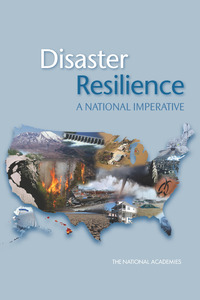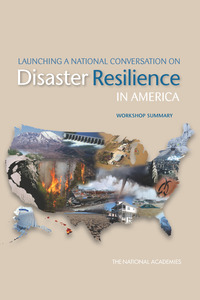
Image Credit: Chuck Burton/Associated Press
Catastrophic flooding in South Carolina during the past several days has claimed multiple lives and prompted President Obama to declare a major disaster in the State of South Carolina and order federal aid to supplement local recovery efforts. The Charleston, SC, metropolitan region is one of four American communities working closely with the Resilient America Roundtable to build resilience to such disasters.
“For the Charleston region, any loss of life is too much,” said Resilient America Roundtable Director Lauren Alexander Augustine. “The extent of the flood’s impact isn’t yet clear, and we hope that when the floodwaters recede, damage will not be as bad as feared. We also hope to channel energy around this flood into efforts that increase flood resilience in Charleston and other flood-prone communities.”
Meetings, workshops, and discussions with community groups in Charleston have identified some key priorities for building resilience in the area, including:
— measuring both flood risk and resilience to flooding;
— linking flood resilience, infrastructure, and economic growth in the community;
— improving communication about risk, perhaps through public art;
— rethinking the role of flood insurance in building resilience; and
— learning from other communities about ways to improve flood resilience.
The Resilient America Roundtable’s work builds upon the recommendations in a 2012 National Research Council report, Disaster Resilience: A National Imperative, which identifies strategic steps the United States can take to reduce impacts on the nation’s communities from natural and human-induced disasters.
Disaster Resilience: A National Imperative
No person or place is immune from disasters or disaster-related losses. Infectious disease outbreaks, acts of terrorism, social unrest, or financial disasters in addition to natural hazards can all lead to large-scale consequences for the nation …
Launching a National Conversation on Disaster Resilience in America: Workshop Summary
With the increasing frequency of natural and human-induced disasters and the increasing magnitude of their consequences, a clear need exists for governments and communities to become more resilient. The National Research Council’s 2012 report …
Dam and Levee Safety and Community Resilience: A Vision for Future Practice
Although advances in engineering can reduce the risk of dam and levee failure, some failures will still occur. Such events cause impacts on social and physical infrastructure that extend far beyond the flood zone. Broadening dam and levee safety …
Reducing Coastal Risk on the East and Gulf Coasts
Hurricane- and coastal-storm-related losses have increased substantially during the past century, largely due to increases in population and development in the most susceptible coastal areas. Climate change poses additional threats to coastal …
In the devastation that follows a major disaster, there is a need for multiple sectors to unite and devote new resources to support the rebuilding of infrastructure, the provision of health and social services, the restoration of care delivery …




